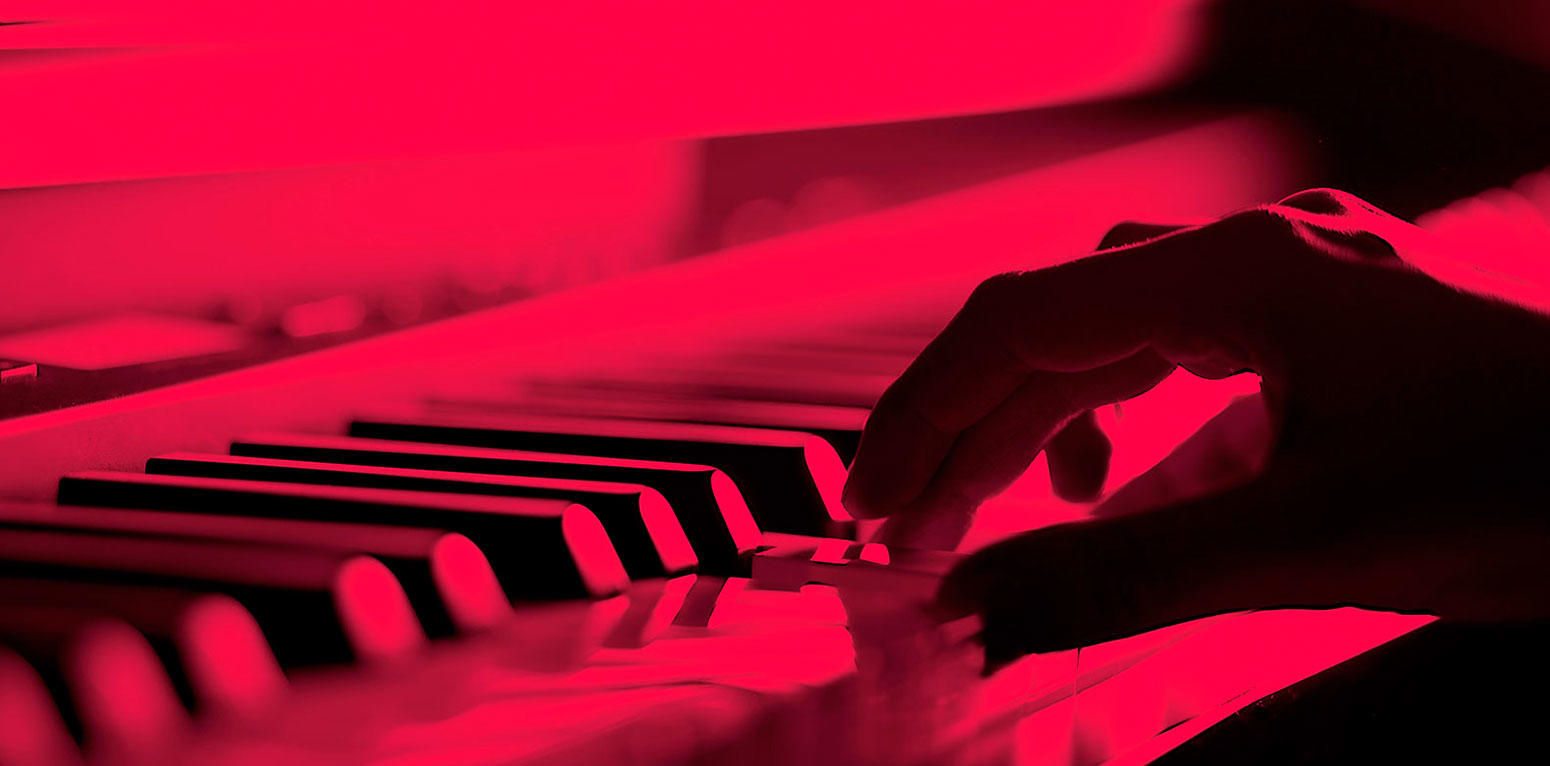
" Kamenaia "
for vocal ensemble (12 voices)
Editions Suvini Zerboni
- Nominated for : The Musical Composition Prize 2009
After the gold medals in piano and chamber music from the Conservatory of Strasbourg (classes Laurent Cabassot, Michele Renoul, Armand Angster), he performs within the Ensemble AccrocheNote or the Ensemble In Extremis that he co-founded. He collaborated with composers such as Pascal Dusapin, Michael Jarrell, Mark Andre, Wolfgang Rihm, etc..
He studied composition with Ivan Fedele in 1996 at the CNR Strasbourg, in 2000 obtained the diploma of composition "unanimously with honorsof the jury". The same year, the Festival Musica dedicated to him a concert, and he participated in the annual Cursus composition and computer music 2000-2001 of IRCAM, where he worked notably with Philippe Hurel, Tristan Murail, Brian Ferneyhough and Jonathan Harvey.
His pieces, directed by amongst others by Pierre Boulez, Jonathan Nott, Hannu Lintu, Marc Albrecht, Pascal Rophé, Guillaume Bourgogne, are interpreted by prestigious ensembles and soloists:
Ensemble Intercontemporain, Orchestre Philharmonique de Radio-France, Arditti Quartet, l'Ensemble Accroche Note, Court Circuit, Strasbourg Philharmonic Orchestra Ensemble Aleph, Lucerne Festival Academy Orchestra, Ensemble Integrals, Divertimento Ensemble, Musicatreize Ensemble, Quartet Mandelring, Avanti, among others; Garth Knox, Irvine Arditti I, Hideki Nagano , Juliette Hurel, Jean-Marie Cottet , Jérôme Comte, Claire-Marie Le Guay, Marc Coppey , Jan Michiels, Ilya Gringolts Sébastien Vichard, Ferenc Vizi, etc..
They could be heard:
- In France : FestivalMusica, IRCAM, Festival d'Aix-en-Provence, Festival Agora, Centre Georges Pompidou, Salle Olivier Messiaen of the Maison de Radio-France Festival of Serres d'Auteuil, etc..
- In Germany : Beethovenfest Bonn, Ultraschall-Festival in Berlin, Darmstadt International Ferienkurse, Mitteldeutscher Rundfunk, Hamburg Opera
- In Switzerland : Lucerne Festival
- In Belgium : Ars Musica Festival in Brussels
- In Italy : Villa Medicis, La Fenice in Venice, Festival Suona Francese, Traiettorie Festival in Parma, Rondo-Milan, Spoleto Festival, Festival Pontino
- In Holland : Concertgebouw in Amsterdam, Gaudeamus Festival
- But also in the United States (San Francisco), in England (Manchester), etc.. and on various French radio (France Musique) and abroad.
He received, amongt others commissions from the Ensemble Intercontemporain, the Lucerne Festival, the Festival Aix-en-Provence, the Beethovenfest Bonn, Les Percussions de Strasbourg, the Louvre, the Foundation Boucourechliev, Les Musicales de Colmar, Radio Berlin, the French state, Accroche Note, Ensemble Musicatreize, and several private sponsors.
He received the 2001 Prize de la Musique de l'Académie des Marches de l'Est, as well as the Mention d'Honneurdu Gaudeamus Festival and the prize Earplay 2002.
In June 2007, he won the Prix Hervé Dugardin of the SACEM, and the Prix André CAPLET of the Academy of Beaux-Arts (Institut de France). He is resident at the Villa Medicis in 2008/2009.
Source: website of Christophe Bertrand http://chr.bertrand.free.fr
NOTICE
For Kamenaia, I chose to draw inspiration from a painting by Jean Dubuffet, "Venus du trottoir" associating a text of Pierre Jean Jouve. The relationship between the two works is more significant than it seems at first glance.
initiated by Art Brut by Jean Dubuffet was a very mixed current, which included artists practicing a spontaneous art, out of the chapels, and often without any artistic training (the Facteur Cheval, for example). The works of the most emblematic of this movement were frequently performed by patients with psychiatric illnesses (one thinks immediately of course of Adolf Wölfli and more recently the "Plancher de Jeannot") moreover by browsing through the mental asylums that Dubuffet constitutes a substantial collection of which authors "extract everything (subjects, choice of materials used, means of transposition, rhythms, ways of writing, etc.) of their own funds and not clichés of classical art or art in fashion".
It is in my opinion, that Pierre Jean Jouve gets closer to l'Art Brut: taken from within himself. For Jouve, who married the psychoanalyst Blanche Reverchon, who used automatic writing a lot in the way of free association to develop his poetry. So the exploration of his unconscious, his inner life, associated with his own inventiveness, his spirituality and his love of dreams which irradiated most of his work, I see in this an attitude quite close to surrealism even if Jouve was fiercely hostile (he saw "an advertising operation of the unconscious", a "snobbery of madness" Yet some surrealists have they not absorbed toxics, used by chance, hypnosis to free their imagination and give access to their unconscious ?
The woman in Jouve is a recurring theme (Paulina 1880, Lulu, Hélène, Catherine Crachat, etc.). and I realized that in all my vocal pieces, the theme of women and love was present (Strofa II, Madrigal, Ioa), and it is absolutely without thinking that I spontaneously chose the painting of Dubuffet, this representation of women: beautiful manifestation of the unconscious ! I decided to use the text in association with "Phoenix (II)" from the collection Melodrama (1956-1958), a beautiful ode to sensuality, the woman and the flesh to accompany the painting and make a musical work.
If I'm in your heart listen to my thoughts.
Let your hand be beautiful your right hand.
Let your breast be bluish-white iridescent with yellow, your left heart
With her moving tip old rose
Your polished belly.
Be bittersweet.
Hanging blonde urn
On her big arches
That your back finishes in triumphant mountains.
Beyond the valleys without fear.
That the severity of your voice be the echo of a secret scent.
That the silence of your hair spread on your shoulders to make eternity roll in a curl.
If this painting of Dubuffet, made of bitumen embedded with stones, broken glass, dust and sand comes an impression of coarseness, roughness and asperity, Jouve's poetry on the contrary seems smooth, soft, all in delicacy, such an illumination, and the feeling of a perfect balance of alexandrin. These two types of matter easily lead to a musical prolongation staccato / legato, micro-polyphonie/statisme, or again infrachromatisme / diatonic. Dualism also between idea and realization, the first coming from the pure unconscious (an almost automatic writing), its realization, absolute intellect, close to some form of structuralism.
Dualism, then, on the one hand, but also trialism. Each of the three parts of the work, corresponding to the three parts of the poem, and proportionate in the format of Haiku (5-7-5) is divided into three sub-sections (with the same proportions), according to a fractal paradigm. The process used observes the same three way relation
First section : liquefaction / depolarization / crystallization.
Second section : appearance / dislocation / harmonic ascension
Third section: crackling / stratification, slowing / Spreading
This piece is constantly changing: when it is not dynamic (big massive crescendos) it is harmonic (to fill infrachromatiquement towards third stacking), and when it does not take the character (liquido poco a poco, poco a poco e viscoso soft, it is rhythmic (acceleration or deceleration in a unique and unchanging tempo).
The text is treated in different ways, except at the very end, where the last sentence of the poem is clearly understandable, words are matter, they colour the musical sounds, and sounds are themselves . In the micropolyphonic passages, musical sounds are undifferentiated it is the words that give colour to the music (the initial passage, for example) like the asperities of Dubuffet.
Finally, regarding the title, you should know that "Venus du trottoir" is not what Dubuffet named his painting, but that which the writer and friend of the painter George Limbour named it, Dubuffet having himself named his painting "Kamenaia - Baba". I took the liberty of borrowing the name for this piece, a tribute to both the intriguing painting of Dubuffet and the sublime words of Jouve.
© 2008 Christophe Bertrand

